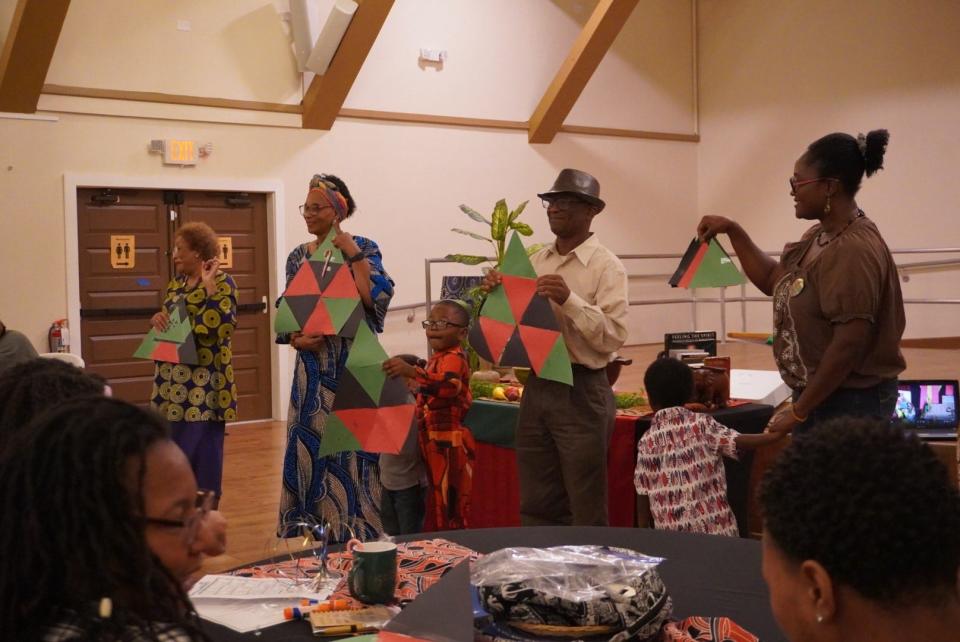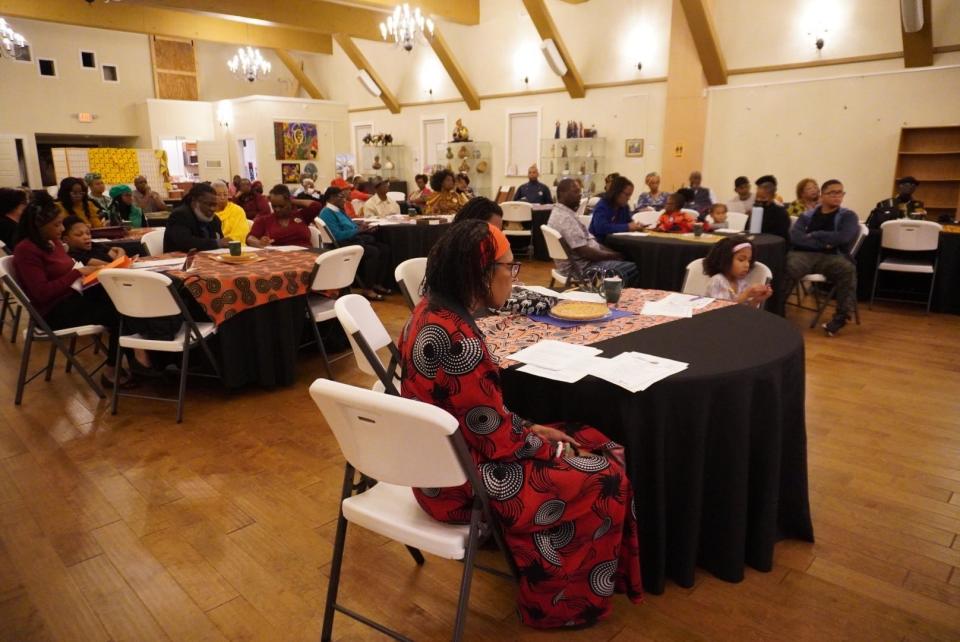1st day of Kwanzaa celebrated at Cotton Club Museum and Cultural Center in SE Gainesville
The Cotton Club Museum and Cultural Center kicked off the seven-day Kwanzaa celebration on Tuesday with drumming and informative sessions on unity.
The museum at 837 SE Seventh Ave. hosted its family focused celebration on the first Kwanzaa principle: unity.
The seven principles of Kwanzaa, which is also known as the Nguzo Saba in Swahili, are Umoja (Unity), Kujichagulia (self-determination), Ujima (collective work and responsibility), Ujamaa (cooperative economics), Nia (purpose), Kuumba (creativity) and Imani (faith).
The word Kwanzaa in Swahili means first fruits.
The theme for Tuesday’s event was to strive for and maintain unity in the family, community, nation and Black race.
Deloris Rentz, financial secretary and manager of the museum’s facilities, presided over the event.
“When we are working together, we are accomplishing much more than if we worked individually,” Rentz said.
Kwanzaa is an African-American holiday that starts on Dec. 26 and ends on Jan. 1. During the week of Kwanzaa, families and communities come together to affirm the bonds between each other, honor their ancestors, and celebrate African and African American culture, according to the National Museum of African American History and Culture.
Each day a candle is lit in the kinara (candle holder) to highlight the principle of the day.
Kwanzaa was created by Maulana Ron Karenga in 1966. The first day of the first Kwanzaa was celebrated in Los Angeles under the direction of Karenga, who was chair of Black Studies at California State University.
Malcolm Kiner, a CCMCC board member, led the pouring of libations to honor the ancestors.
“This is for our people — the original people and the remembrance of those who struggled on our behalf,” Kiner said. “This is for the creator who provides us with things great and small.”
Rentz then welcomed brothers Honor and Merit McKinney for their drumming performance and talked about the art and history of drumming.
“The holders of enslaved Africans would ban drums because of the information it transports to our ancestors,” Rentz said.
Roma Rollins, the museum’s Kwanzaa program chair, talked about the history of Kwanzaa.
Guardian newsletter: Gainesville Guardian will transition to an email newsletter format
“During the week of the Kwanzaa celebration, we greet each other with Habari Gani, which is Swahili for ‘What’s the news?’ ” Rollins said.
During Kwanzaa celebrations, tables are decorated with the kinara, mkeka (mat), muhindi (corn to represent the children), mazao (fruit to represent the harvest), and zawadi (gifts).
Decorations at Kwanzaa celebrations also include the colors of the Pan-African flag — red, black and green— that was created by Marcus Garvey, founder of the Universal Negro Improvement Association, in 1920.
The red represents the blood the African ancestors shed, black represents the African people, and green represents the land and natural resources of Africa, according to the late Garvey.
Ishmael Rentz, his wife Tarcha Rentz, their son Ian Rentz and daughter Ieve (Eve) Rentz gathered around the table to light the black candle in the kinara and shared their meaning of unity.
Tarcha Rentz talked about the importance of unity by saying her family were co-coordinators for their family reunions this summer.
“Young people want to know their history,” she said. “They want a sense of belonging and that brings a sense of unity. We can start small and spread it abroad to churches and the community.”

Attendees talked to one another to get to know each other better through a "Find the Guest" exercise, and people seated around the table collaborated on creating a Unity Triangle together with red, black and green triangles.
At the end of the program, guests sang “I Need You to Survive” by Hezekiah Walker and The Love Fellowship Choir and learned the dance steps to the Kwanzaa slide.

Other Kwanzaa events that will be held in Gainesville are:
The celebration of Kujichagulia (self-determination) on Wednesday, Dec. 27, at 7 p.m. at the A. Quinn Jones Museum, 1013 NW Seventh Ave.
The celebration of Ujima (collective work and responsibility) on Thursday, Dec. 28, at 6 p.m. at Greater Bethel AME Church at 701 SE 43rd St.
This article originally appeared on The Gainesville Sun: SE Gainesville museum celebrates first day of Kwanzaa

